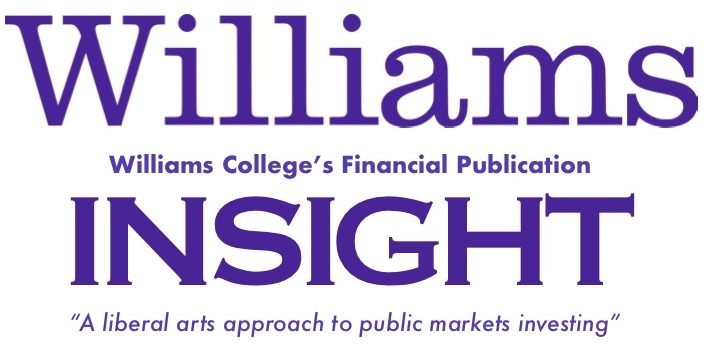By Caroline Orphanos
PayPal Holdings Inc. (NASDAQ: PYPL)
Market cap: $274.41B
P/E Ratio: 88.45
Company Description
PayPal Holdings Inc. operates as a technology platform and digital payments company that enables digital and mobile payments on behalf of consumers and merchants worldwide. Its payment solutions include PayPal, PayPal Credit, Braintree, Venmo, Xoom, and iZettle products. The company’s payments platform allows consumers to send and receive payments, withdraw funds to their bank accounts, and hold balances in their PayPal accounts in various currencies. It also offers gateway services that enable merchants to accept payment online with credit or debit cards as well as digital wallets. Founded in 1998 and headquartered in San Jose, CA.
Investment Catalysts
PayPal has done a great job showing how a top notch fintech firm can take advantage of the changes brought by the COVID-19 crisis, face the challenge of a disruptive economy, and come out on top. COVID has accelerated the rise of digital payments with many physical retailers closed and more and more consumers shopping from the comfort of their homes. As stores have reopened, touch free payments are sought after due to concerns with handling physical cash, and inertia will likely keep these gains in place for the years to come. Of those in the digital payment sector, PayPal in particular has experienced astounding growth and boasts strong financials: 15.2 Million Net New Active Accounts were added in Q320 alone, the strongest quarter in company history despite the major recession and economic turmoil in the broader economy and market.
Total Payment Volume (TPV) growth was impressive as well: 4 Billion payment transactions and $247B TPV in Q320, up 30%, with Venmo alone processing $44B in TPV (up 61% from Q2). GAAP EPS up 121% to $0.86 in Q320, and a share buyback of 1.8 million shares returning $350 Million to shareholders projects confidence of management in the future of the company.
PayPal also recently introduced their Venmo credit card issued by Synchrony (NYSE: SYF) and powered by Visa network, stepping into the credit card game after the success of the Venmo credit card and capitalizing on Venmo’s steady young user base and shows a partnership with competitor Visa. This is part of PayPal’s efforts to diversify Venmo’s monetization, having grown from relying solely on merchant fees on websites and mobile apps for revenue to moving further into the physical retail space as well. The Venmo Credit Card and Debit Card both feature a custom QR code that allows easy peer-to-peer payment and tap to pay functionality, building on Venmo’s social aspect with the option for users to share transaction activity to their Venmo feeds if they wish. The company also announced a partnership with CVS (NYSE: CVS) in which they pledged support for QR code PayPal and Venmo transactions in 8,200 of its stores in the US by the end of 2020. Additionally, Venmo charges fees for certain account transactions such as instant cash withdrawals and peer-to-peer payments made using a credit card account.
PayPal’s business model contains broad exposure and diversification in the digital payment world. PayPal provides its flagship gateway platform with a mostly older user base, and fast-growing Venmo offers a large young user base and social media like aspect that generates strong loyalty and network externalities. The company also has strong opportunities for further growth. Internationally, Venmo is US only right now, with great potential to expand to other markets abroad. PayPal has also been making bold moves in the crypto world, as in late 2020 they rolled out their new service enabling users to buy hold and sell crypto directly and make it available as a funding source at its 26 million merchants worldwide. The feature has seen strong early demand and drove a spike in downloads of the PayPal app on Apple’s App store.
Competition
PayPal is part of a crowded industry, with strong competition from Square (CashApp), Zelle, Apple’s Apple Pay, traditional credit card companies such as Visa and Mastercard, and recent addition Google’s Google Pay. The digital payment industry experienced solid growth in the 2010s that is projected to continue in the coming years, with an expected CAGR of 13.5% for 2020-2025.
| PYPL | SQ | V | MA | |
| Revenue growth from 2019 | 19.15% | 76.72% | -4.92% | -4.18% |
| EBITDA growth from 2019 | 23.76% | -60.51% | -4.35% | -2.02% |
| P/E ratio | 86.71 | 0.0 | 43.41 | 52.67 |
| EV/EBITDA | ||||
| Market share | ||||
| Net profit margin | 15.48% | 4.05% | 49.74% | 43.13% |
Analysts recently have been buzzing about the addition of Google Pay to the playing field. On the surface Google Pay could pose a challenge to PayPal, considering the influence of Google and its integration with popular Android technology. However, I believe PayPal and Venmo are poised well to hold Google at bay, due to both the solidity of PayPal’s success and Google Pay’s lack of a strong foothold in the fintech sector so far. Google Pay currently serves about 150 million users, less than half of PayPal’s 361 million active accounts. However, many of those payments likely originate from the Google Play store where Google Pay is the default option for all Android users. Google Pay isn’t in even the top 10 of Apple’s App Store finance app rankings as of late December, while Square’s Cash App, PayPal’s Mobile Cash, and Venmo are all in the top five. Additionally, according to McKinsey’s 2019 Digital Payments Survey Google Pay isn’t one of the top three methods for in-app payments, online payments, or peer-to-peer payments. Only in in-store payments did Google Pay gain a significant foothold where it still is far away from Apple Pay, and which are not part of PayPal and Venmo’s main business model.
